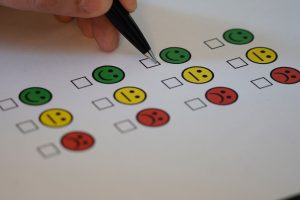
For Assignment X, I decided to focus on Participatory Services. According to Linh Nguyen, a faculty member of Science and Engineering, “a participatory library is one that fosters community among the users, librarians, and broader society” (Nguyen, 2015). I feel that I somewhat have an advantage in understanding participatory services as I currently work in a library that is very user friendly. I work in the children’s space and we are constantly striving to build a better community and take all feedback for programs and events. After looking through the various articles for the week and listening to Professor Stephens lecture, I have come to have a better understanding of how libraries can implement participatory services. Participatory libraries focus on the users and how they access services, adapting to the needs of the users, and building a community around the users.
First and foremost, a participatory library focuses on the users of the libraries and how they access these services. Essentially, this means that librarians and their libraries are focused on designing programs and activities around the people that will benefit from them. They focus on understanding what the user needs by implementing different tools for feedback. In my library, we use tools such as annual surveys, after program surveys, and polls on social media. I am currently on the Strategic Planning Committee where we make decisions based on used feedback. The annual survey asks questions to the user about their experiences in the library and we create goals surrounding community needs and develop an action plan to meet these goals. We collect the data into a spreadsheet and use this data to guide our decisions in the following fiscal year. We ask questions about programs, collections, and patron experiences. Our 2021-2023 goal was to increase outreach, have a more diverse collection, more diverse programming, and improved customer services. Based on our outreach events, collections, programming, and survey results surrounding customer satisfaction, we achieved all of these goals for the 2021-2023 strategic plan.

The next thing that a participatory library focuses on is increasing accessibility and inclusive services within the library and the digital world. Throughout the readings, I noticed a common theme. All libraries that are participatory are using social media services and other technologically advanced tools in order to connect with users. In the Tame the Web article, guest Michael Casey states that “the participatory library is open and transparent, and it communicates with its community through many mechanisms” (Casey, 2011). I do believe that since it has been 10+ years since this article was published, we have made great strides in technology as far as use in libraries is concerned. Again, I am relating the use of social media to the library that I work in. My supervisor, Rosie, runs our social media pages. She posts surveys and polls in relation to our events. She creates events where people can RSVP whether they are showing up digitally or in person. We have also gone live on Facebook for in person events before which users have expressed gratitude for when they were unable to leave the house. Outside of social media, we also respond to reference requests digitally if users opt to use our “Ask a Librarian” page. We also understand that not all patrons have access to the internet so we provide hotspots for home use as well. We are able to provide services to people without the expectation of them walking through our doors. We are able to meet the needs of users throughout the state by offering digital services.
Lastly, a participatory library adapts to the needs of its users as well as building a community around these users. For me personally, I run an abundance of programs in order to meet the needs of many different library users in my community. I have 3 tween (ages 8-12) programs a month, 2 family programs a month, 2 homeschooler (ages 6-18) programs a month, 1 all ages program a month, and 1 program a month for adults with disabilities. These are my programs between September-May. In the summer, I offer more programs but am going to focus on these. When I began at my library, none of these programs existed. I, in a way, built them from the ground up. The first program that I created was a program for tweens. After about 2 months of this program, the feedback that I received was that we needed more programs for families. We have a lot of programs that are designed for babies and toddlers but these occur during the day. Families who have children between the ages of 4-7 were not able to access programs in our library after school.

After I began to implement family programs, patrons that did not have children felt comfortable telling me that they liked the idea of my programs but were unable to access this. Thus, all age programming was born. Once all age programming came to be, there were many homeschool families who naturally attended and also expressed interest in building a homeschool cohort. I told them that I would work with them to see what I could do and the homeschool program was born. From January 2024-May 2024 I ran 1 program a month. By the summer, we realized that the 50+ people in attendance one time a month was simply not enough to meet the needs and therefore we decided a bi-weekly program would satisfy the user’s needs. Lastly, my adults with disabilities program was born when an adult patron with an adult disabled son expressed her interest in programs that would meet his needs. It took me about 6 months to set it into motion but in December 2024, the program will have been running for 1 year.
Outside of programming, we also have dedicated spaces for users in our library. We have a dedicated teen space, children’s space, and adult space. We have policies in place to enforce age limits in order to ensure that teens and children are able to use the space as intended. In the article “Embracing Service to Teens”, the author acknowledges that teens need a space where they feel welcome and comfortable to be themselves (Casey, 2008).
To conclude, participatory services transform how libraries serve patrons. By making sure that users are included in decision making and services, librarians are creating more inclusive spaces and relevant programs. By doing this, they are able to meet the needs of the users in the community and ensure satisfaction for years to come.
References:
Casey, M. (2011, October 20). Revisiting participatory service in trying times: A TTW guest post by Michael Casey. Tame the Web. https://tametheweb.com/2011/10/20/revisiting-participatory-service-in-trying-times-a-ttw-guest-post-by-michael-casey/
Casey, M. (2008, May 15). Embracing service to teens. Tame the Web. https://tametheweb.com/2008/05/15/embracing-service-to-teens/
Nguyen, L. C. (2015, April 30). Establishing a participatory library model: A grounded theory study. The Journal of Academic Librarianship. https://www.sciencedirect.com/science/article/abs/pii/S0099133315000592#:~:text=A%20participatory%20library%20is%20one,%2C%20librarians%2C%20and%20broader%20society

Hi Carlee!
Your experience with children really shines through. I can just tell you put a lot of love and effort in engaging with the community and creating thoughtful programs. It’s so wonderful to see how you adapted based on user feedback, allowing for more participatory service, as well the inclusion of both accessibility and inclusivity shows a genuine commitment to the community. The point you made about using social media and technology to connect is huge. Being able to connect with them in other ways aside from in-person can enhance the library experience and even the participation of patrons. This really does serve as a reminder that user feedback and participation can help build the community and the library itself for the community. Thanks for sharing!